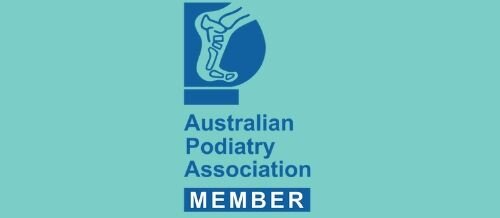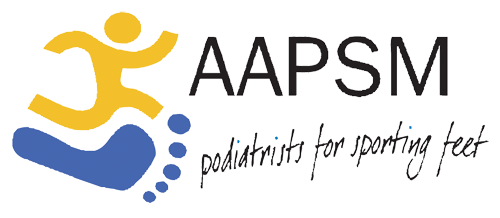Iliotibial Band Syndrome
Iliotibial Band Syndrome (ITBS) is a common cause of pain that occurs along the outer knee. It is especially prevalent in runners, cyclists, and those who maintain an active lifestyle.
Typically, this condition is caused by the irritation or inflammation of the iliotibial band, which is a thick band of connective tissue that runs from the hip to the shin. If ITBS is not treated, it can eventually become a recurring issue that can disrupt a person’s freedom of movement and ability to exercise.
At Gold Coast Foot Centres, our team of specialist podiatrists combines state-of-the-art diagnostic tools with scientifically based treatment plans to get to the root cause of your pain. This enables them to devise a customised recovery plan that allows each patient to move pain-free.
If you find yourself suffering from soreness around the outer knee, contact us today for an initial consultation.
What Is Iliotibial Band Syndrome (ITBS)?
Iliotibial Band Syndrome (ITBS) is a painful overuse injury that is caused by the inflammation or irritation of the iliotibial band.
Located on the outside of the thigh from the hip to just below the knee, this thick band of connective tissue stabilises the knee. In doing this, it supports smooth leg movement during physical activities like walking, running, and cycling.
Pain and inflammation can occur when the IT band becomes tight or rubs excessively against the outer knee.
What Causes Iliotibial Band Syndrome?
Iliotibial Band Syndrome is most often caused by overuse and repetitive motion, especially when running, cycling, or hiking. These repeated movements can place excessive strain on the IT band, especially in people whose biomechanics are not ideal.
Other causes of ITBS include poor running or cycling technique, such as overstriding or poor saddle position. Additionally, those with weak hip muscles or glutes may experience reduced pelvic stability, which, in turn, increases the workload on the IT band.
ITBS may also be caused by flat feet or poor foot posture, as this can lead to a misalignment that results in added stress. It may also be triggered by wearing inappropriate footwear that is worn-out and unsupported.
Common Symptoms of ITBS
The onset of Iliotibial Band Syndrome often manifests itself as a sharp or burning pain that is located around the outer side of the knee. Typically, it is most apparent either during or after physical activity, with the discomfort often worsening with repetitive movement, such as running downhill, cycling, or climbing stairs.
Some people may notice swelling or a thickened feeling around the outside of the knee, which is usually caused by inflammation in the area. Additionally, a clicking or snapping sensation may also occur when bending or straightening the knee. This is due to the tight IT band rubbing over the bony structures.
Generally speaking, these symptoms can range from mild irritation to significant pain, limiting activity. However, if you experience any of them, it is worth getting yourself checked over by a qualified podiatrist.
Diagnosing ITB Syndrome
At Gold Coast Foot Centres, we adopt a comprehensive approach to diagnose Iliotibial Band Syndrome. The process starts in your initial consultation when one of our specialists conducts a thorough assessment. During this time, they will attempt to understand your symptoms, medical history, and lifestyle in terms of the physical activity you do.
If they deem it necessary, a detailed gait analysis and biomechanical review will be conducted, which will help them to identify factors like abnormal movement patterns, muscle imbalances, or foot posture issues that might be contributing to your pain.
In some cases, they may even refer you for ultrasound or MRI imaging to confirm a diagnosis and rule out the possible presence of other conditions.
Iliotibial Band Syndrome Treatment Options
At Gold Coast Foot Centres, we pride ourselves on the personalised approach we take to treating Iliotibial Band Syndrome.
Every treatment plan our podiatrists devise is guided by your specific symptoms, lifestyle, and what you are hoping to achieve. They also use industry best practice techniques to relieve you of any pain you might be experiencing.
Here is an overview of the treatment options they provide.
Rest and Activity Modification
The first step in managing ITBS is to reduce the repetitive activities that aggravate your symptoms. Doing this may involve temporarily adjusting your running or cycling routine to allow the inflammation to settle.
Our experienced podiatrists will guide you on low-impact alternatives you can undertake and produce a safe timeline for reintroducing different activities.
Stretching and Strengthening Programs
We encourage targeted stretching and strengthening exercises as part of most patients’ recovery. The focus here is usually on releasing tension in the iliotibial band, hip flexors, and quads, while strengthening the glutes, core, and hip stabilisers.
These programs help correct any muscular imbalance you might have and improve your lower limb control during movement.
Footwear and Orthotic Solutions
If you wear footwear that is worn out or generally inappropriate, it can contribute to poor foot posture and, therefore, the risk of an increased strain on the IT band.
Our team can assess your shoes and recommend better, more supportive, and activity-appropriate options. If needed, they may also prescribe custom orthotics to correct any biomechanical issues you might have, like overpronation or flat feet.
Shockwave Therapy
For those suffering from persistent or stubborn cases of ITBS, extracorporeal shockwave therapy (ESWT) may be recommended.
This non-invasive treatment uses high-energy sound waves to stimulate healing in the affected tissues and reduce inflammation. It is particularly helpful if you have a long-term case of ITBS that has not responded to conventional care.
Dry Needling or Soft Tissue Therapy
If you are experiencing tightness in the surrounding muscles and fascia, this can be addressed through dry needling or soft tissue release techniques.
These therapies can be effective in relieving muscle tension, improving blood circulation, and supporting the natural healing process. All of which reduces the strain on the iliotibial band.
Strapping or Taping
Our podiatrists might give you kinesiology taping or rigid strapping to provide you with temporary relief and stability when you move.
These types of taping techniques can reduce irritation in the outer knee by adjusting the load placed on the IT band. They also encourage better alignment and muscle activation.
Referral to Allied Health Professionals
In more complex cases, we may collaborate with other allied health professionals such as physiotherapists or sports medicine doctors. This team-based approach is designed to give our patients the best chance of preventing injury and making a long-term recovery.
Preventing Future Flare-Ups
While Iliotibial Band Syndrome can be quite painful and debilitating, there are some things you can do to prevent yourself from suffering from it in the first place.
This includes strengthening your glutes and hip muscles and improving your running, cycling, or hiking technique. It is also a good idea to invest in good-quality footwear that provides excellent support.
Why Choose Gold Coast Foot Centres?
At Gold Coast Foot Centres, our experienced podiatrists are committed to delivering expert care that is tailored to your individual needs.
They take the time to fully understand the causes of your ITBS and will create a bespoke treatment plan to rid you of pain.
Our Gold Coast clinics are equipped with the latest technology to help them make a precise diagnosis and formulate the most effective treatment. They also take a whole-body approach to pain management, which looks beyond the symptoms to restore your movement, improve your function, and help you get back to doing what you love doing the most, without feeling any pain or discomfort.
Book an Appointment with Our Gold Coast Podiatrists
If you think you might be suffering from ITBS, it is important to make an appointment with a podiatrist as soon as possible.
At Gold Coast Foot Centres, we offer same-day appointments where possible. So, please book a consultation online now or call us on (07) 5539 4484.
FAQs
-
In mild cases of ITBS, the condition may improve with rest and self-care. However, if you feel ongoing pain, then it is often a sign of underlying biomechanical issues.
Without having the issue properly diagnosed and treated, it can become a recurring problem. For this reason, it is important to seek professional advice from one of our expert podiatrists.
-
Both of these conditions can cause knee pain in runners, but they are not the same. The main difference between them is that ITBS causes pain on the outside of the knee, whereas runner’s knee (aka patellofemoral pain syndrome) is typically felt at the front of it.
-
Yes, we recommend that you temporarily reduce or stop running activities if pain is present. If you continue to train through any discomfort, it can hamper your performance and delay the healing process.




